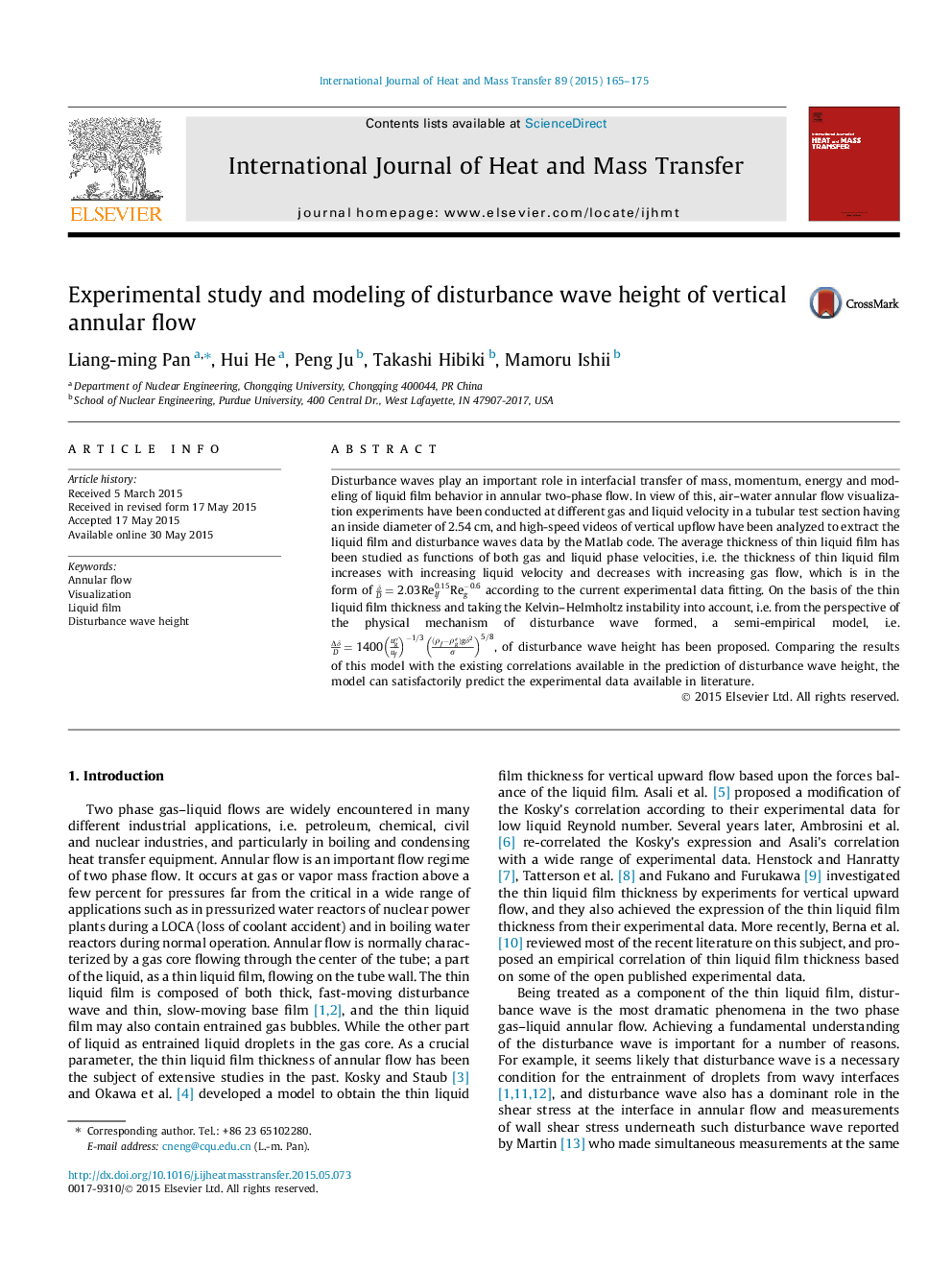| Article ID | Journal | Published Year | Pages | File Type |
|---|---|---|---|---|
| 7056518 | International Journal of Heat and Mass Transfer | 2015 | 11 Pages |
Abstract
Disturbance waves play an important role in interfacial transfer of mass, momentum, energy and modeling of liquid film behavior in annular two-phase flow. In view of this, air-water annular flow visualization experiments have been conducted at different gas and liquid velocity in a tubular test section having an inside diameter of 2.54 cm, and high-speed videos of vertical upflow have been analyzed to extract the liquid film and disturbance waves data by the Matlab code. The average thickness of thin liquid film has been studied as functions of both gas and liquid phase velocities, i.e. the thickness of thin liquid film increases with increasing liquid velocity and decreases with increasing gas flow, which is in the form of δD=2.03Relf0.15Reg-0.6 according to the current experimental data fitting. On the basis of the thin liquid film thickness and taking the Kelvin-Helmholtz instability into account, i.e. from the perspective of the physical mechanism of disturbance wave formed, a semi-empirical model, i.e. ÎδD=1400ugâ³uf-1/3(Ïf-Ïgâ³)gδ2Ï5/8, of disturbance wave height has been proposed. Comparing the results of this model with the existing correlations available in the prediction of disturbance wave height, the model can satisfactorily predict the experimental data available in literature.
Keywords
Related Topics
Physical Sciences and Engineering
Chemical Engineering
Fluid Flow and Transfer Processes
Authors
Liang-ming Pan, Hui He, Peng Ju, Takashi Hibiki, Mamoru Ishii,
